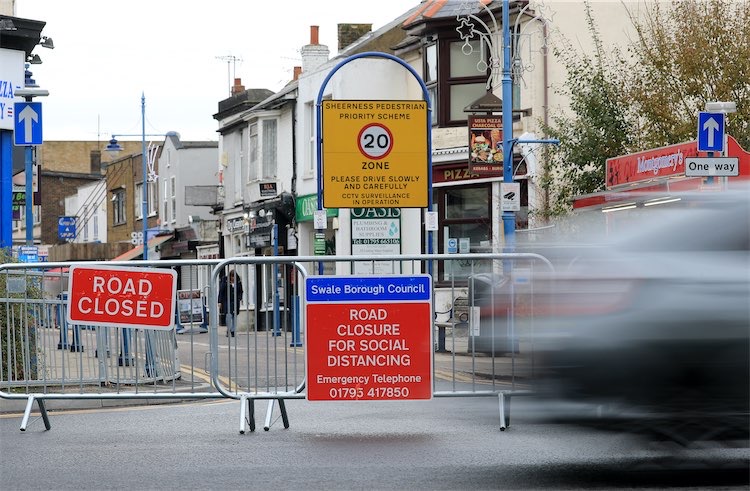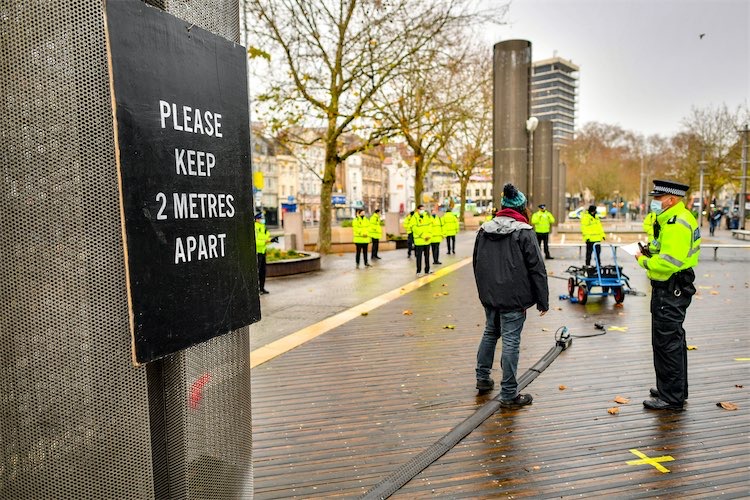Why Have Some Areas Of England Gone From Tier 1 To Tier 3 During Lockdown?
6 min read
Five areas in England have gone from being Tier 1 pre-lockdown to Tier 3 from next Wednesday – but local councils and MPs are unclear as to the rationale.
Five areas in England have gone from being Tier 1 pre-lockdown to Tier 3 from next Wednesday – but local councils and MPs are unclear as to the rationale.
Kent and Medway, Warwickshire, South Gloucestershire, North Somerset and Bristol are all now in Tier 3, with varying infection rates across the authority areas. Asked why in certain parts of the country, whole counties were being put into Tier 3 despite high local variation in case rates, a Downing Street spokesperson said:
“Where regions are densely populated and lots of people travelling between areas, we obviously have to ensure tiers are targeted at the appropriate level to protect people and control transmission.”
England’s current weekly case rate is 201.3 per 100,000 people, a reduction of 32.7%
Kent and Medway:
Kent’s current rate is 273.5 per 100,000 people, a reduction of 2.99% from the week before. However, some districts have very high rates, and 5 out of 12 local councils have seen rates increasing by up to 29% in the last week. Swale’s rates are now at 530.4, Thanet’s at 477, and Gravesham at 392.7. The lowest rates in the county are in Tunbridge Wells at 107.8 per 100,000 and Ashford at 126.2. Medway, which is a different council but shares NHS services, had a rate of 399 cases per 100,000 people.
The government’s rationale for placing Kent and Medway into Tier 3 is as follows:
“Case rates are high and continuing to rise with large increases in case rates in almost all areas in the last 7 days. Some of the highest case rates in the country are currently seen in Kent. Rising case rates in people aged over 60 are a particular concern. Positivity is also increasing in 10 of the 13 lower tier local authorities. Kent And Medway Sustainability and Transformation Partnership are reporting hospital admissions are increasing and mutual aid necessary across the county.”
But Kent MPs say that while they had a meeting with Nadine Dorries, the health minister earlier this week, they have not been given any additional information about why cases are rising locally. Roger Truelove, leader of Swale Council, told Sky News ahead of the Tier 3 announcement that he thought the increase was down to people breaking lockdown rules.

One MP also thought the reason for county wide Tier 3 was the pressure on the county’s seven main hospitals, with 367 COVID patients in beds on 17 November, up from 327 a month before.
They also pointed to commuting schools as potential reasons for the increase despite lockdown. At least nine schools in Kent and nine schools have had to partially or fully close due to Covid outbreaks over the 2nd lockdown. Conversely, Kent’s universities have seen relatively low numbers of cases.
South Gloucestershire, North Somerset and Bristol
The three areas of South Gloucestershire, North Somerset and Bristol, which are part of the same Clinical Commissioning Group, are being treated as a “national geographic grouping” due to the high levels of commuting throughout the area. They are all now in Tier 3, having been in Tier 1 pre-lockdown.
Before the lockdown, cases in Bristol were increasing, leading to the city being placed in ‘Tier 1 Plus’ measures. Cllr Toby Savage, leader of South Gloucestershire council, says that the authority was already in discussion with the government before lockdown about moving into Tier 2.
The government says: “The overall picture remains concerning with very high case rates overall (325/100,000) and in the over 60s (208/100,000). Positivity is 10.4%.”
One Gloucestershire politician pointed to the high case rates in Frenchay – a suburb to the north east of Bristol where the University of West England is based, but mostly part of the South Gloucestershire local authority – to explain why the authority’s overall case rate was high.

Cllr Savage told PoliticsHome that while the number of new cases was “slowing over recent days and actually starting to fall”, the overall case rate was still very high.
“There is always going to be a lag between when people first become infected when they then start showing symptoms, and then some of them will then have to go into hospital.”
“We saw back at the start of the year, when the first national lockdown started, it wasn't until several weeks of those restrictions that you started to see the impact on rates of infection. So you would again, through the second lockdown, similarly expect to see a lag between when the restriction starts to then when you see the case numbers starting to starting to plateau and then starting to fall.”
Cllr Savage added that the Southwest was starting from a “very low base of infection rates”, with the lowest infection rates in the country in the first wave, which may now be contributing to their spike in cases as less people had antibodies.
However a local councillor in North Somerset suggested that lockdown fatigue had contributed to overall rates across the county increasing, with their ward reporting a lack of masks being worn in public places, and outbreaks of cases in several schools.
Local MPs for North Somerset, Dr Liam Fox and John Penrose, put out a joint statement condemning the government’s decision to group the three areas together, with North Somerset’s rate now at 204.6 cases per 100,000 (down 32.9% from last week), compared to Bristol’s rate of 304.4 (down 35% from the week prior). The two veteran Conservative parliamentarians pointed out that Bath and North East Somerset were both in Tier 2, despite still being part of the same “natural travel to work area”.
Warwickshire
Before lockdown, Warwickshire was in Tier 1, with neighbouring Solihull and Coventry both in Tier 2. Now, all three have been grouped together in Tier 3, with rates particularly high in the northern part of Warwickshire in particular, and the county now at 216.2 cases per 100,000 (a decrease on previous weeks).
The government says: “The case rate remains very high (though falling) across this area at 236/100,000. The case rate in over-60s remains very high at 182/100,000. There is a clear upward trend in case rates in over 60s in three of the seven local authority areas. Positivity is 9.0%. The pressure on the local NHS remains high.”
In particular Nuneaton and Bedworth’s rate on 21 November was 317.21 cases per 100,000, higher than its neighbouring Coventry. Between the 14 and 21 November, Coventry’s rates fell from 285.85 cases per 100,000 to 198,35. In contrast, Stratford’s rate on the 21 November was just 105.31 cases, the lowest in the country.
Business minister and MP for Stratford-on-Avon, Nadhim Zahawi tweeted: “Hugely disappointed that we are in tier3. The high numbers of infection (especially over 60) & hospitalisation in North Warwickshire, Solihull is the challenge. North & South Warwickshire need to work together to get the infection rates down and go into tier 2 in two weeks time.”
